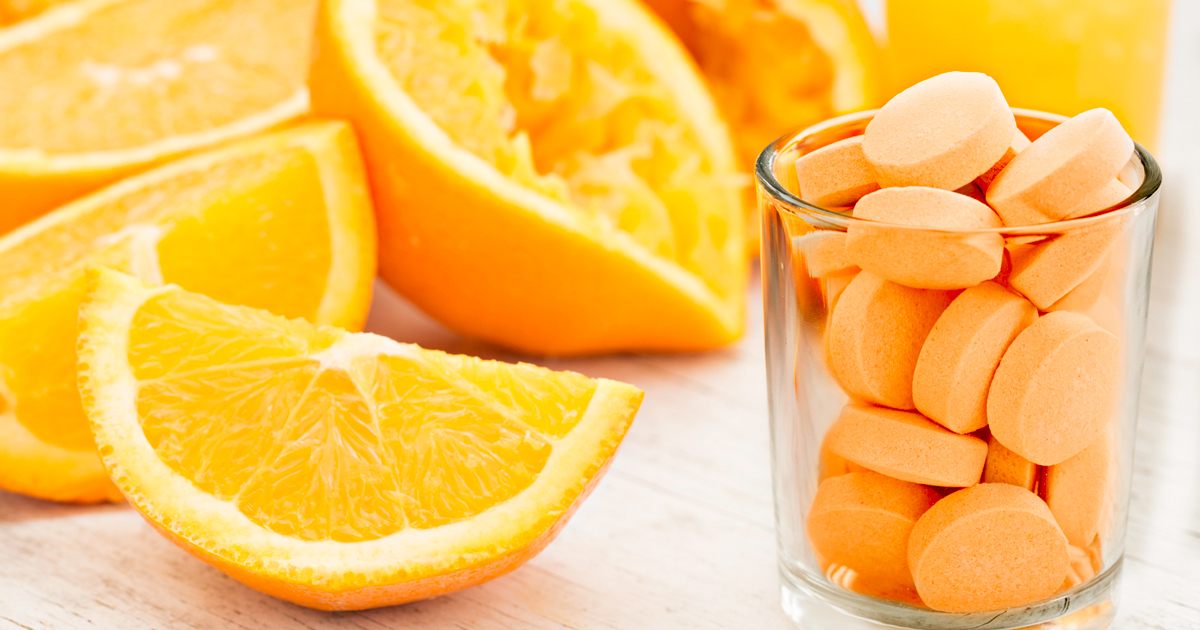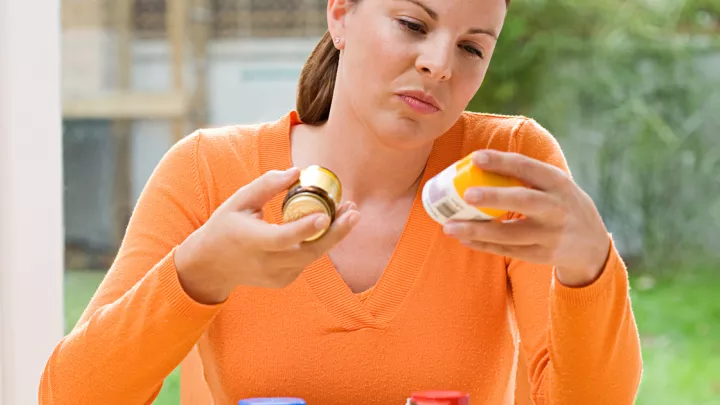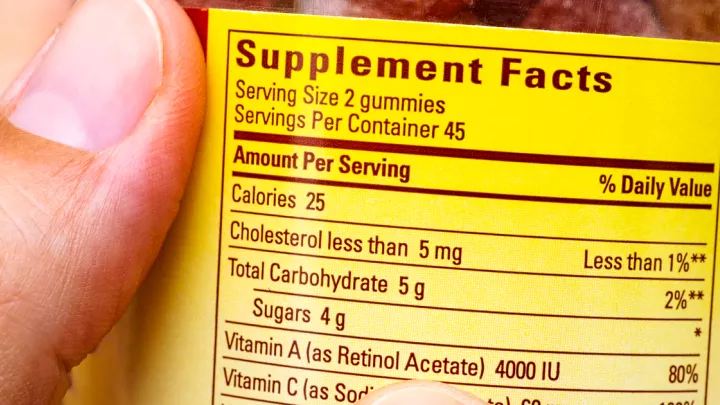Can too much vitamin C lead to kidney stones?

Being in the midst of cold season, many of us try to take as many preventive actions as possible to avoid the sniffles, whether it's washing our hands more frequently, taking more vitamins, sucking on zinc lozenges or popping extra vitamin C supplements.
But if you are a male, be aware of how much vitamin C you are taking. A recent study in the "JAMA Internal Medicine" journal found that men who ingested vitamin C supplements of 1,000 mg/day or more were at increased risk for kidney stones. Vitamin C intake through diet did not carry the same risk.
The recommended dietary allowance for vitamin C in the United States is 75 mg/day for women and 90 mg/day for men.
"Most people get enough vitamin C from a balanced diet and our bodies absorb it most effectively from the foods we eat," says Sarah Malik, MD, Nebraska Medicine gastroenterologist.
"People who might be susceptible to vitamin C deficiency, such as smokers, people with severe intestinal malabsorption or cachexia and cancer patients might be at increased risk of vitamin C inadequacy, may benefit from the use of vitamin C supplements under a doctor's supervision," says Dr. Malik.
Major sources of vitamin C include citrus fruits, tomatoes, cantaloupes and strawberries. Approximately 70% to 90% of vitamin C is absorbed in moderate intakes of 30 to180 mg/day. However, at doses above 1g/day, absorption falls to less than 50%. Absorbed, unmetabolized vitamin C is excreted in the urine.
What is a kidney stone?
A kidney stone is a hard deposit of salts and minerals that form inside your kidneys. Your kidneys remove waste and fluid from your blood, which makes urine. If you don't have enough fluid in your blood, the wastes can accumulate and form into stones. These stones can be as small a grain of salt or grow to be as big as a golf ball.
Vitamin C intake, also called ascorbic acid, has been proposed as a risk factor for kidney stones formation because vitamin C may increase urinary oxalate excretion, a type of calcium salt responsible for some stones.
"Ingested vitamin C is partly converted to oxalate and excreted in the urine, thus potentially increasing the risk of calcium oxalate stone formation," says Dr. Malik. "In a metabolic study of 24 individuals, 2 grams daily of vitamin C increased urinary oxalate excretion by about 22%."
Symptoms of kidney stones
Common symptoms of kidney stones include:
- Sharp pain in your side or lower part of your abdomen
- Pain while urinating
- Blood in your urine
- Nausea, vomiting
- Urinary urgency
- Pink, red or brown urine
Kidney stones can become stuck in the kidney if they are too large to pass on their own, which may lead to symptoms such as severe kidney pain, nausea and vomiting, explains Dr. Malik. If there is kidney obstruction, permanent kidney damage can occur if left untreated.
If urine is infected next to the obstructing stone, this is a urologic emergency that requires rapid decompression, Dr. Malik says. If this occurs, you may experience fever, chills, frequent and strong urge to urinate, blood in your urine, cloudy and foul-smelling urine.
"If you have any symptoms of a blocked stone or infection, see your doctor or go to an emergency department as quickly as possible for assessment and treatment," says Dr. Malik. "This is a situation in which a patient could become septic very quickly if left untreated."
Risk factors for kidney stones
Approximately 1 in 10 people will develop kidney stones. While anyone can develop kidney stones, the following will increase your risk:
- Dehydration due to dry climate or from intense exercise or you simply don't drink enough water
- Obesity
- Metabolic conditions such as cystinuria, oxaluria or gout
- Use of certain drugs such as protease inhibitors, antibiotics, some diuretics and calcium-based antacids
- Diseases or surgery of the digestive tract including inflammatory bowel disease and gastric bypass surgery
- A diet rich in salt, protein, refined sugars and soft drinks
- You have had kidney stones in the past
- Family history of kidney stones
- Structural abnormalities in the kidney such as ureteropelvic junction obstruction, urinary diversion surgery, horseshoe kidney
- You have polycystic kidney disease or another cystic kidney disease
- Your urine contains high levels of cystine, oxalate, uric acid or calcium
If kidney stones are suspected, your health care provider will order tests to determine if you have kidney stones and to develop a treatment plan. Treatment will depend on how large the stone is, its makeup, whether it is blocking your urinary tract and the degree of pain it is causing.
How to treat kidney stones
If you have a small kidney stone, pain medicine and fluids may be enough to help the stone pass through the urinary tract. A large stone or one that is blocking your urinary tract may require shock wave lithotripsy to break up the kidney stones. Ureteroscopy is another common procedure performed that involves using a long tube-like tool to find the stone and remove it or break it into small pieces. In some cases, surgery to remove the kidney stone may be required.
How to prevent kidney stones
To help prevent kidney stones, drink eight to 12 cups of fluid a day. You may also need to reduce sodium and animal proteins such as meat and eggs in your diet.
"Current scientific evidence agrees on the harmful effects of high meat or animal protein intake and low calcium diets, whereas high content of fruits and vegetables and a balanced intake of low-fat dairy products carry the lowest risk for kidney stones," says Dr. Malik. "A balanced vegetarian diet with dairy products seems to be the most protective diet for kidney stone patients".
If you have had kidney stones and your doctor can determine the type of stones, they can give you more specific diet recommendations.
Once you have had a kidney stone, you have a 35% to 50% chance of developing another stone within 10 years," says Dr. Malik. "Follow your doctor's recommendations to help prevent a recurrence."
Get it checked out. Schedule an appointment with one of our specialists at 800.922.0000 or come to the Emergency Department if your symptoms are acute.







